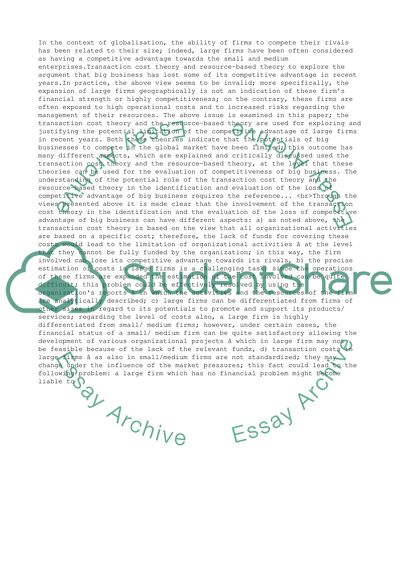Cite this document
(“Transaction cost theory and resource-based theory to explore the Essay”, n.d.)
Retrieved from https://studentshare.org/business/1412438-transaction-cost-theory-and-resource-based-theory-to-explore-the-argument-that-big-business-has-lost-some-of-its-competitive-advantage-in-recent-years
Retrieved from https://studentshare.org/business/1412438-transaction-cost-theory-and-resource-based-theory-to-explore-the-argument-that-big-business-has-lost-some-of-its-competitive-advantage-in-recent-years
(Transaction Cost Theory and Resource-Based Theory to Explore the Essay)
https://studentshare.org/business/1412438-transaction-cost-theory-and-resource-based-theory-to-explore-the-argument-that-big-business-has-lost-some-of-its-competitive-advantage-in-recent-years.
https://studentshare.org/business/1412438-transaction-cost-theory-and-resource-based-theory-to-explore-the-argument-that-big-business-has-lost-some-of-its-competitive-advantage-in-recent-years.
“Transaction Cost Theory and Resource-Based Theory to Explore the Essay”, n.d. https://studentshare.org/business/1412438-transaction-cost-theory-and-resource-based-theory-to-explore-the-argument-that-big-business-has-lost-some-of-its-competitive-advantage-in-recent-years.


